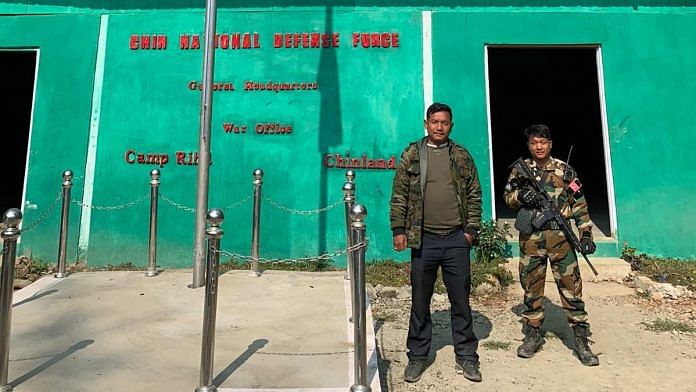Farkawn, Mizoram: Swarms of swallows rose from the lush paddy fields along the banks of the Tiau River on the Myanmar-India border, as children were rushed out of the local school building and villagers hurried for safe ground. Three combat jets, locals had just been warned, were headed northeast from the Myanmar Air Force base at Tada-U, Mandalay Region, on a mission to bomb insurgents of the Chinland Defence Forces — civilian militias fighting Myanmar’s military regime.
Salai Van Thawng Thawng, the 27-year-old general-secretary of the Chin National Organisation (CNO), seemed calm at the prospect that explosions would soon shatter the silence of the foggy January morning. “We can pray,” he suggested.
The bombs did not fall that morning, 16 January, at the village under the Falam Township in Myanmar’s Chin state, located at the border with India’s Mizoram — but the threat is an everyday one.
The border village, which ThePrint visited earlier this week, is where the Chin National Defence Force (CNDF) has a temporary base, complete with an armoury, and sections for drones, mines, and sniper units.
The CNDF is the fighting force of the Chin National Organisation (CNO), formed on 13 April 2021 in response to the coup d’état that Myanmar’s armed forces had orchestrated in February that year.
This resistance movement has a strong connection with Mizoram, due to the Chin communities living in the state. Indeed, the CNO/CNDF was founded after discussions held in Champhai, Mizoram — with membership drawn from Chin communities on both sides of the border.
Earlier this month, two air raids had targeted Camp Victoria, the headquarters of the Chin National Army, the armed wing of the long-standing Chin National Front (CNF) in western Myanmar, about 10km from Farkawn village in Mizoram. The country’s ethnic armed organisations generally operate as the military wing of a political body.
Of the five bombs, three hit the camp, killing five people and injuring 12 others.
“We had just finished a surgical procedure when the bombings took place,” a medical volunteer at Victoria Hospital, close to the camp, recalled. Those who died were suffocated when their bunker collapsed, he said.
Two other bombs detonated perilously close to the Indian side. A report submitted by Champhai deputy commissioner (DC) James Lalrinchhana to the state Home Department recorded that “one of the bombs or its shrapnel hit the Tiau River”.
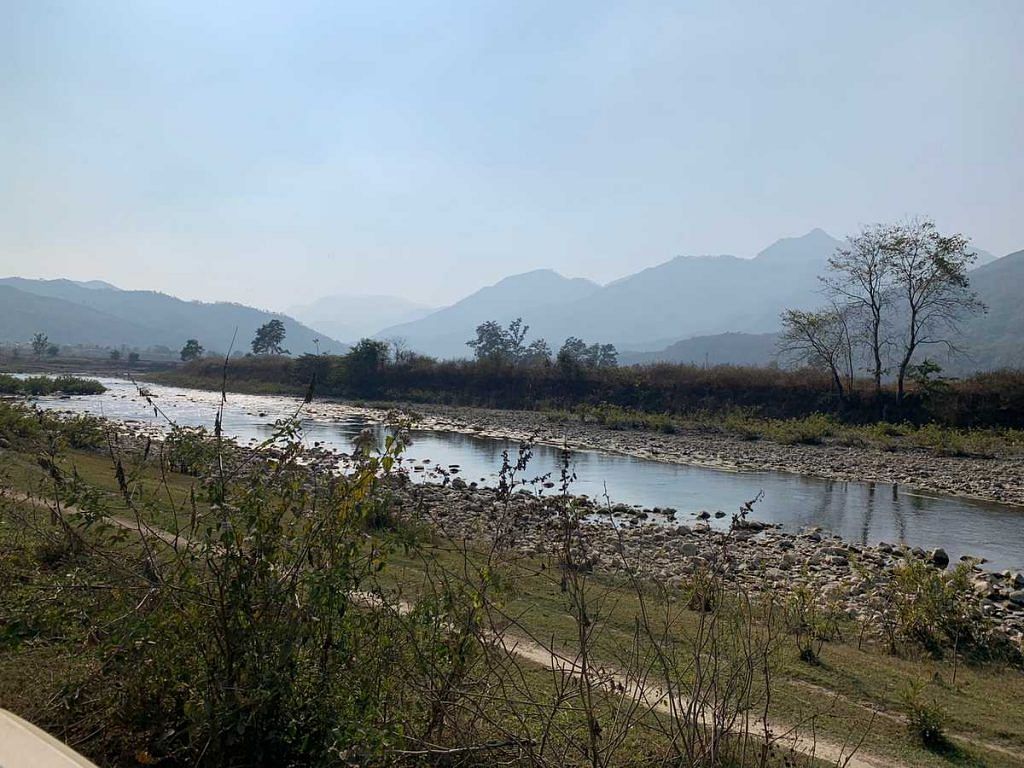
For the residents of the tiny village on the Myanmar side of the border, India is no foreign country. Ties of ethnicity and kinship bind communities on both banks of the river.
At the Falam camp too, the fighters depend on food and medical supplies from India. The cadres, including a few Indian nationals, practise firing along the Tiau River bank, surrounded by trees, bamboo groves, and green mountains. This month’s bombing illustrates the danger these ties could suck India into as the savage conflict rages on in Myanmar.
Also read: As Myanmar junta bomb border insurgent camp, Mizoram plans medical aid mission to help ‘kin’
A refugee tide to India
Framed by cherry blossom trees in full bloom, and cloaked in a delicate winter fog, the villages of Farkawn and Vaphai in Mizoram lie on the edge of one of the world’s most murderous battlefields.
According to the Mizoram government, more than 30,400 Myanmar nationals have taken shelter in different parts of the state since 2021, when the military coup in that country led insurgents to take up arms against the junta. Some live with relatives, others in encampments.
Ever since the air raids, an unnatural silence has enveloped the region — over 250 kilometres from Aizawl, across mountain roads — with few vehicles to be seen.
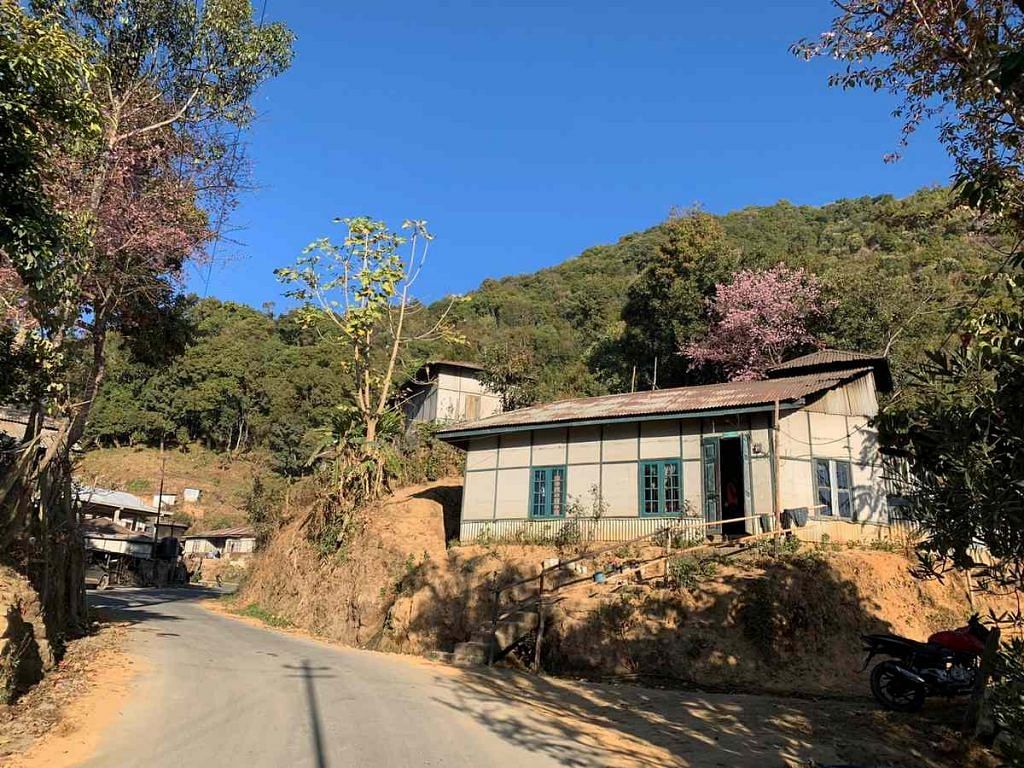
The empty roads of Vaphai village at the easternmost part of Champhai, Mizoram | Credit: Karishma Hasnat | ThePrint
“We are engaged in farming, growing rice and corn in the valley near Myanmar,” said 38-year-old Patea, a car mechanic at Vaphai. “What if the Myanmar army mistakes us as armed people and bombs our land? We need some protection from the government, and a show of India’s military strength.”
Sangi, who runs a snack bar at Vaphai, said she first mistook the air raid for an earthquake. “I closed the shop and stayed indoors.”
Following the airstrikes, more refugees have streamed across the border, said Champhai DC Lalrinchhana. According to data provided by the district administration till 21 January, over 9,700 people including women and children are living in temporary shelters, rented houses, or with their relatives on the Indian side of the border in Champhai.
At a refugee camp in Farkawn, Sangnghak and Kimthluaii, a couple in their 60s, were preparing dinner. The family, from Myanmar’s Tahan district, used to make a living selling fish, but now survive on donations. The family’s 95-year-old matriarch, Famchan, is suffering from severe back pain but said she is comfortable in Mizoram and not expecting any solution in Myanmar.
Among the younger generation of the family, a 12-year-old boy has joined the resistance armed forces and is now living in the jungle. The family seemed proud of him.
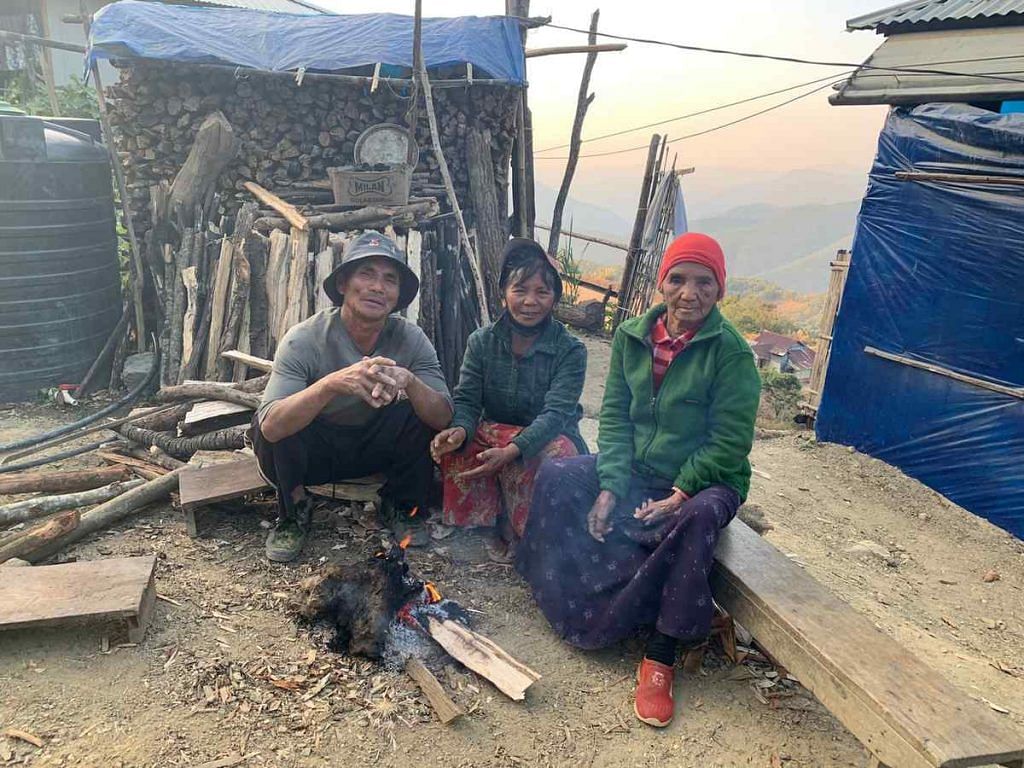
“If the Myanmar army continues like this, we will stay here forever, but when the nation is safe, we are willing to go back. Many families and friends have been left behind,” said 28-year-old Biakrem Paari, a mother of three from Tahan.
“We are comfortable. The people are friendly, and they provide us with shelter and essentials. At first, we felt a little unfamiliar, but local people are so hospitable. At this point in time, our needs are little. It’s sometimes hard, but we can manage,” said Paari, who is working alongside her husband as a stone breaker.
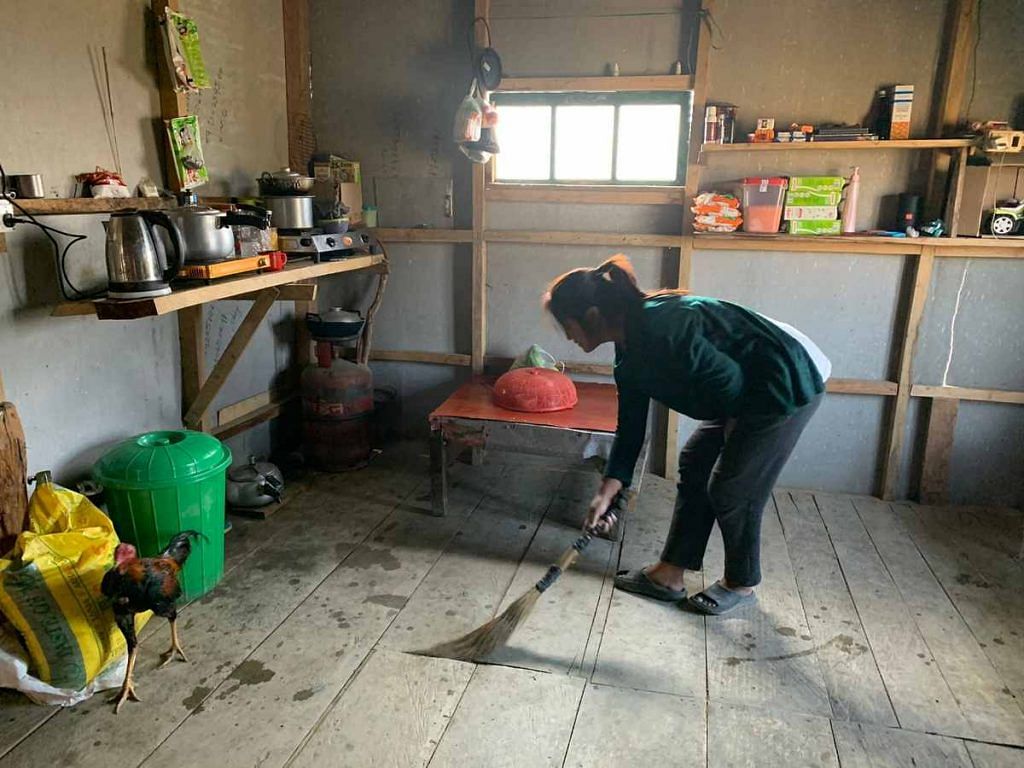
“People have knocked on our doors and we have to provide whatever we can, within our capacity,” said Lalrinchhana, DC Champhai. “Things will soon go back to normal, if there are no more air raids.”
Few, however, are convinced that will be the end of the story. As the number of disgruntled refugees has grown, evidence has mounted that munitions are being shipped to insurgents from Mizoram. Late last year, the National Investigation Agency (NIA) made the latest in a series of arrests, related to a shipment of over two tonnes of industrial explosives into Myanmar.
Faced with the risk of further air raids over Falam and for the safety of villagers, the resistance fighters located along the Tiau say they are planning to move further away from the border.
The Chin insurgency
Located on the banks of the Tiau, Camp Victoria has long been a hub of the decades-old insurgent campaign against the Tatmadaw, Myanmar’s military.
Following the 1988 military coup, refugees streamed across the border from Chin State, while a generation of young fighters took up arms. India watched warily, fearing the conflict could re-energise insurgent groups inside Mizoram. But in 2015, Chin insurgents signed a ceasefire agreement with then President U Thein Sein’s government.
Then, the military coup of 2021 reignited the fighting.
Air raids have taken place elsewhere in the region too, as the military has found itself struggling against increasingly successful insurgencies. On 18 January, for example, seven civilians were killed and dozens injured in Katha Township in the upper Sagaing Region when two Myanmar military jets bombed a cluster of 1,800 homes. Three days before that, on 15 January, junta troops burned down a more than century-old church.
The January airstrike, CNO/CNDF military commander Peter Thang told ThePrint, followed three days of surveillance operations by Myanmar jets. “They flew in almost every day at noon, but this time they came in early,” said Thang, 36.
The Chin Defence Force (CDF), formed on 4 April 2021, is made up of 18 ethnic Chin armed organisations under different townships and regions including smaller tribes. The CDF, in turn, is part of a larger umbrella body, the Chinland Joint Defense Committee, which mediates the differences between different groups.
“We don’t say we represent the whole of Chin State,” Thang clarified. “We only represent Falam, but we are forming alliances and convincing other townships to collaborate for a separate Chin State.”
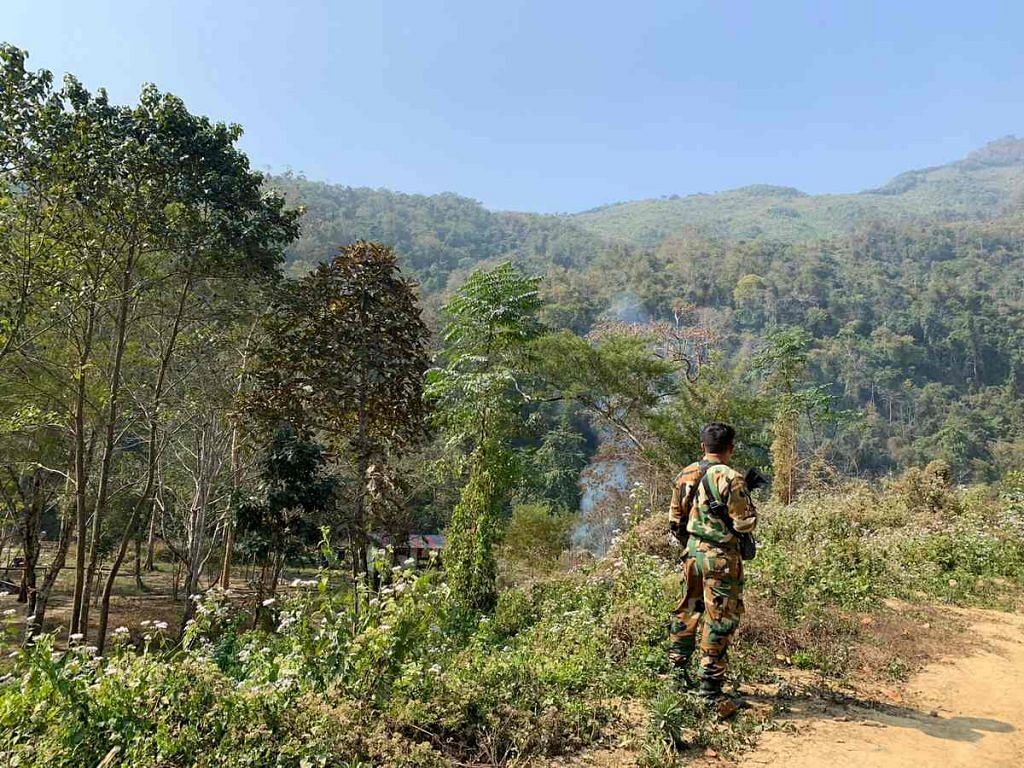
The situation, Thang explained, is like Nagaland, where the National Socialist Council of Nagalim’s Issac-Muviah faction “says it is rallying for all Nagas, but its leadership actually represents Nagas from one tribe or a certain area”.
“We have a common objective, but different methods to achieve it. The CNF leadership consists of people mostly from Hakha and Thantlang Townships,” Thang said. “Likewise, the CNDF is made up of people from the Upper Chindwin region in Sagaing Division, Falam Township, and India, where many indigenous Falam families are found.”
Thang added the Chin National Front is stronger in military terms, but is yet to develop an administrative structure.
According to Thawng Thawng, the CNO/CNDF general secretary, there is good understanding between his organisation and the CNF.
“We fight together, sometimes we borrow heavy weapons from them. When bombings happened at Camp Victoria, we called up and spoke with our friends. Since we couldn’t do anything much, we hid and prayed,” he said.
‘Like a separate government’
Even at its most powerful, central authority in Myanmar has rarely extended to Chin territories — and today, effective power lies with the insurgent groups.
The CDF works closely with the National Unity Group, with represents the democratic opposition. Though Falam township itself is held by the military, the CNO/CNDF claims it controls a total of 186 villages, with a population of over 70,000 people.
“The place where we take control, we have to provide education, healthcare, administration and other facilities,” Thang said.
The older children at Falam are mostly trained soldiers who chose to join the armed group, but also wish to complete their education. At the village school, which admits children from kindergarten till Grade 11, groups of teenagers were seen playing football or chatting during recess. The fighter jets had not come that day. Little ones peeped out of the classroom window, amused to see the new visitors.
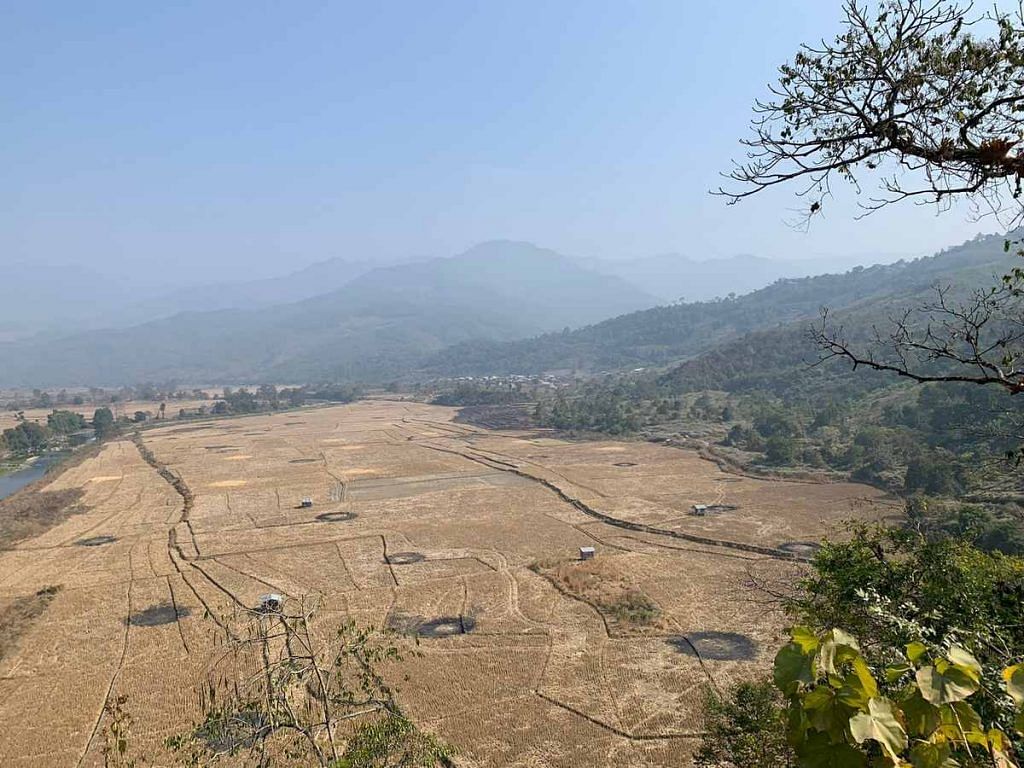
Eighteen-year-old Anthony Bawisimmawi, who loves to play football, said he joined the armed movement to protect his motherland. “Though it’s sometimes difficult, we all feel proud. Last week, I saw the jets approaching. I know they come to shoot us,” said Anthony, who wants to pursue engineering once he accomplishes school.
A 17-year-old female soldier, a class 7 student from New Haimhhual village, said: “I know how to fire an AK-47. It’s my favourite weapon. I am a soldier, and I would do anything to protect my country.”
Teachers like Paul Ayeminhtut and Suikhawnei who were part of the civil disobedience movement are proud members of the CNO today, working towards a common future. “We might sometimes miss seeing the fighter jets and helicopters, but the children are always alert,” said Suikhawnei.
On the question of funds, Thawng Thawng said the Chin diaspora is a major contributor.
“Some of our people work as maids overseas, in places like Oman, Singapore, Macaw and China,” he added. The organisation also collects revenues from goods passing through checkpoints it controls, though it claims payments are voluntary. “The price of assault rifles earlier was Rs 30-50 lakh (INR), but has now gone up to Rs 130 lakh. We don’t have heavy weapons yet,” he said.
Tribe against tribe
For its part, the Tatmadaw has sought to weaponise other Indian northeast insurgencies against the Chin — in essence, allying with forces working against India.
Last year, ethnic Meitei insurgents from Manipur were reported to have joined hands with the Tatmadaw. The Zomi Revolutionary Organization/Zomi Revolutionary Army (ZRO/ZRA), an armed group based along the Chin-India border, had allegedly raided the bases of resistance groups in Chin State.
The insurgent coalition, however, is also developing ties across ethnic lines. Among the groups working together with the Chin are the powerful Arakan Army. There are also consultative ties between the Chin and ethnic groups elsewhere in the country.
The ethnic groups hope participation in Myanmar’s National Unity Government (NUG) — a government in exile formed in opposition to the junta — will eventually lead to self-determination.
The NUG, formed in April 2021, comprises youth and pro-democracy activists. Since its formation, the NUG and CNF/CNA have joined hands against the military regime. The Myanmar government has labelled the NUG illegal, and its armed wing, the People’s Defence Force (PDF), as a terrorist organisation.
Speaking to ThePrint from an undisclosed location, Dr Ngai Tam Maung, deputy minister of the Ministry of Humanitarian Affairs and Disaster Management in the NUG, said: “The young generation started this revolution. Today, they are standing firm and willing to pay any price, even if this price could be too much. We are sorry about the sacrifices, we have lost much, but we have to finish what we started.”
“Socially and politically, the Myanmar army has already lost the battle, but militarily they are stronger than us,” said Maung, who comes from Mindat Township in Chin State. “We need swift humanitarian assistance and military aid.”
(Edited by Asavari Singh)
Also read: India is ignoring the escalating war in Myanmar that could reignite conflicts in Northeast


